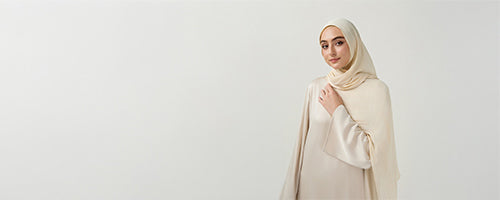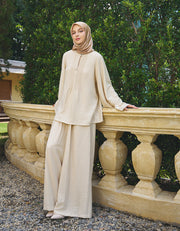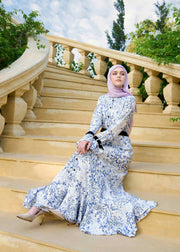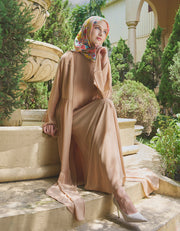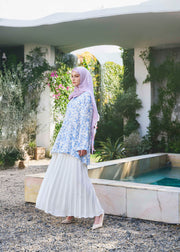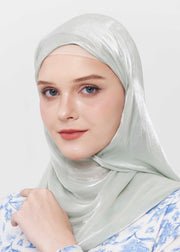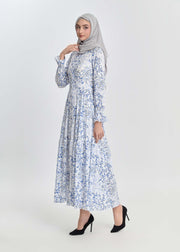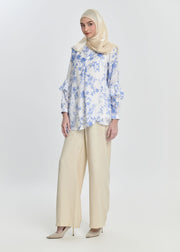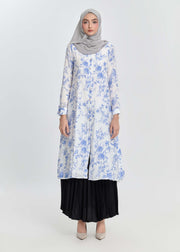Why Texture Matters: Fabrics and Embellishments in Islamic Fashion
When we think about Islamic fashion, we often picture elegant abayas, flowing jilbabs, and modest tunics. But beyond silhouette and color, one subtle element defines their beauty — texture. The way fabrics feel, move, and reflect light adds depth and emotion to modest outfits. From soft chiffon to intricate jacquard, the texture fabrics Islamic fashion designers choose can completely transform a look from plain to luxurious.
Understanding Texture in Islamic Clothing Fabrics
In Islamic fashion, texture refers to the surface quality of the fabric — smooth, coarse, sheer, or embroidered. This quality influences not just the look but also how the garment behaves:
-
Matte textures (like crepe or linen) create a humble, elegant appearance suitable for everyday modest wear.
-
Glossy textures (like silk or satin) evoke sophistication and are often reserved for formal occasions.
-
Textured weaves (like jacquard or brocade) add richness and detail without needing excessive embellishment.
These fabric choices align with the values of modesty, comfort, and self-expression - the essence of Islamic fashion.
How Textured Fabrics Elevate Modest Outfits
-
Adds Visual Interest Without Excess Exposure
Modest fashion thrives on subtle beauty. Textured fabrics allow designers to add visual complexity — pleats, embroidery, or woven details — without compromising coverage. -
Creates Depth and Dimension
When layered correctly, combining different texture fabrics Islamic fashion pieces (like a matte abaya over a silky dress) enhances the sophistication of the outfit. -
Reflects Personality Through Fabric Choice
-
Soft fabrics such as cotton voile express simplicity and calmness.
-
Metallic-thread jacquard or tulle speaks of creativity and confidence.
-
Velvet or suede fabrics portray luxury and poise.

How Textured Fabrics Elevate Modest Outfits
Embellishments: A Complement to Fabric Texture
In many Islamic fashion collections, embellishments go hand in hand with texture. Designers use beads, lace appliqués, or metallic threads to highlight the natural character of the fabric.
For instance:
-
A chiffon abaya with delicate embroidery enhances the flow of the fabric without weighing it down.
-
A satin hijab trimmed with pearls creates a soft shimmer that elevates a plain look.
-
Subtle sequin details on crepe dresses give an understated glamour perfect for Eid or wedding events.
These enhancements make every outfit feel unique — luxurious yet modest.

Embellishments: A Complement to Fabric Texture
Choosing the Right Fabric Texture for Every Occasion
To master modest dressing, knowing which fabric texture suits each setting is essential:
-
Daily Wear: Lightweight cotton, crepe, and linen. Breathable and simple, ideal for everyday modest comfort.
-
Office or Formal Settings: Satin-backed crepe or textured polyester blends. They drape beautifully while maintaining structure.
-
Special Occasions: Silk, velvet, or brocade. Their natural sheen and richness make them perfect for celebrations.
-
Layering Pieces: Jersey or georgette, which balance softness and flexibility, allowing creative modest layering.
By thoughtfully selecting texture fabrics Islamic fashion designers ensure every outfit fits both function and faith.
The Future of Texture in Modest Fashion Design
Modern modest wear brands increasingly experiment with texture — mixing traditional textiles with new technology. For example:
-
Eco-textured fabrics made from bamboo or organic cotton reflect the sustainability movement.
-
Digital embroidery and laser-cut lace allow intricate designs without excessive cost.
-
Hybrid materials, such as linen-poly blends, combine breathability and durability for all-day comfort.
As fashion evolves, these innovations bring a fresh perspective to the modest wardrobe, balancing beauty, sustainability, and cultural identity.

The Future of Texture in Modest Fashion Design
Conclusion: Texture as a Signature of Modesty and Style
In Islamic fashion, texture is more than a design detail — it’s a language. It expresses modesty through layers, richness through touch, and individuality through form. Whether it’s a softly draped chiffon hijab or a richly embroidered abaya, texture fabrics Islamic fashion continue to define how Muslim women express elegance while staying true to their values.
For women seeking stylish, high-quality textured pieces that align with modest sensibilities, explore collections at Minnaba — where every fabric tells a story of faith, grace, and modern femininity.

